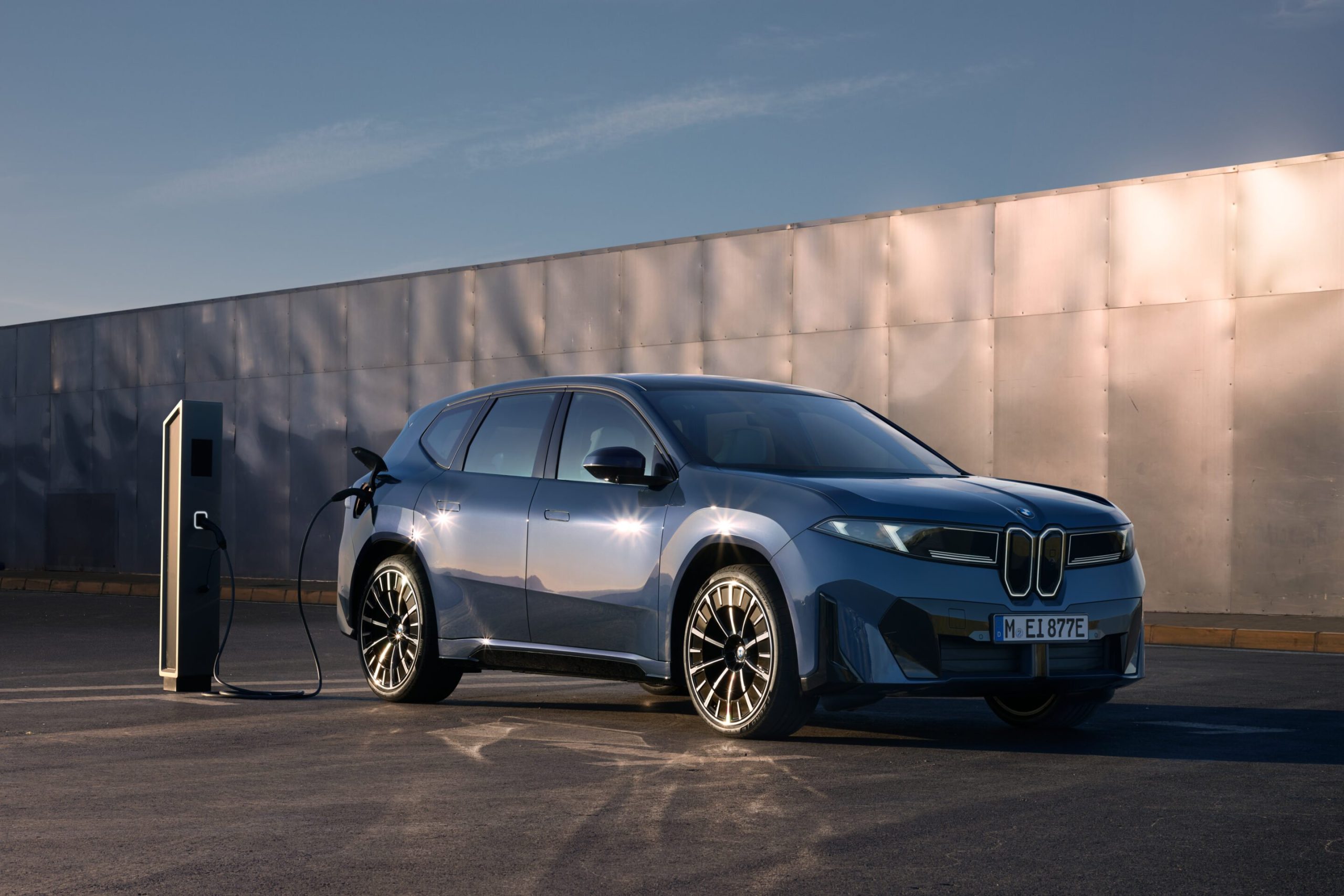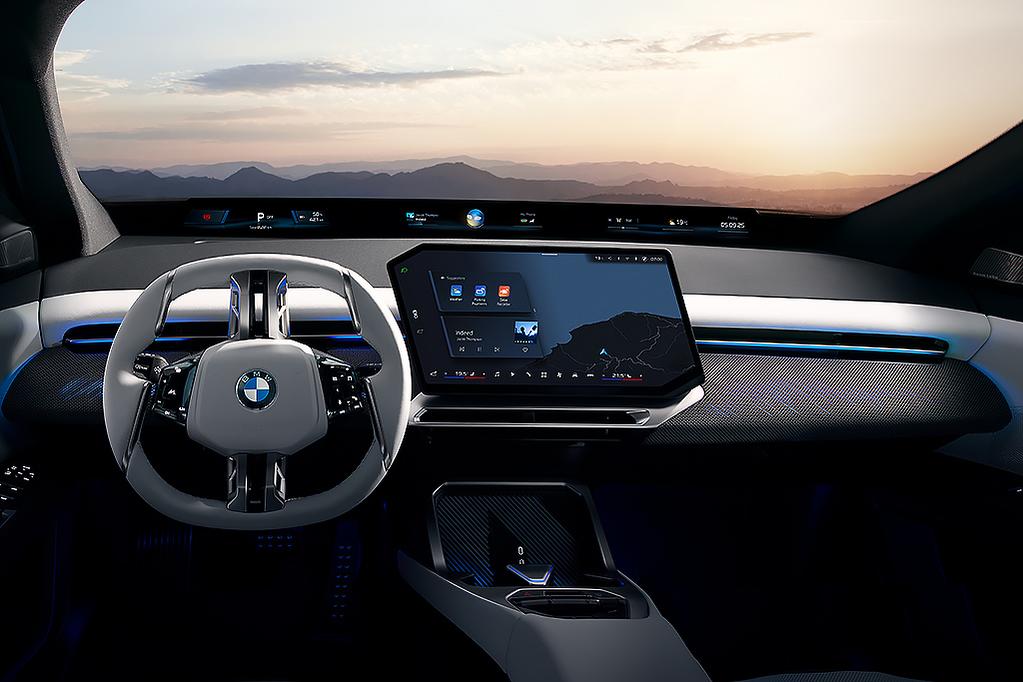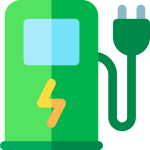
BMW has unveiled the 2026 iX3, a model the marque positions as the vanguard of its next-generation electric range. Arriving in Australia from mid‑2026 and built in a new Hungarian factory, the iX3 is the first production car to sit on BMW’s “Neue Klasse” architecture – a ground-up electric platform that the company says ushers in major advances in range, charging, efficiency, computing and cabin design.
What’s new and why it matters
- Dedicated EV architecture: Unlike the outgoing iX3 (a petrol‑based X3 conversion), the 2026 iX3 uses a bespoke electric-car platform. That delivers gains in interior packaging and energy efficiency and supports new battery and motor arrangements that BMW says underpin the model’s headline figures.
- Radical design and cabin overhaul: The car debuts BMW’s new exterior and interior design language – smaller, illuminated kidney outlines, a cleaner body surface with flush door handles, compact glazed areas and a futuristic cabin dominated by new digital displays and the upgraded “super‑brain” computer BMW has been promoting across Neue Klasse models.
- Battery, efficiency and range: BMW quotes a WLTP range of up to 805 km for the iX3 – roughly 75 per cent more than the previous iX3 despite a 35 per cent larger pack (reported at 108 kWh versus 80 kWh). The jump is down to higher energy‑density cells, a structural battery pack to save weight and increased drivetrain efficiency. BMW claims its new motors reduce energy losses by around 40 per cent while being lighter and cheaper to build.
- 800‑volt electrical architecture: The iX3 moves from 400V to an 800V system for much faster DC charging. BMW’s figures indicate 10-80 per cent charging in about 21 minutes and the ability to add about 350 km of range in roughly 10 minutes under ideal conditions; AC charging is rated at up to 11 kW for overnight top‑ups.
- Performance and practicality: The advertised iX3 50 xDrive dual‑motor variant produces about 345 kW and 645 Nm combined, returning a BMW‑claimed 0-100 km/h time of 4.9 seconds and a 210 km/h top speed. Practical volumes include a 520‑litre boot (expandable to about 1,750 L with rear seats folded) and a 58‑litre frunk.

Australian arrival and pricing
BMW Australia confirms the iX3 will arrive from mid‑2026, with local specification including Vehicle‑to‑Load (V2L) capability – the ability to supply up to about 3.7 kW from the traction battery to external appliances. Final Australian pricing will be announced closer to launch; industry expectation is that the new model will carry a premium over the outgoing iX3’s last pricing range (around AU$91,000-$104,900), given the step change in technology and battery capacity.
How it stacks up against rivals
The iX3 now sits squarely in the mainstream mid‑size electric SUV segment but with technology that places it against not just Tesla’s Model Y but also newer entries from European and Asian brands that have adopted 800V architectures and structural battery designs. Practical comparisons:
- Range: an advertised 805 km WLTP is highly competitive on paper and positions the iX3 among the longest‑range EVs in the class.
- Charging: the 800V capability brings fast‑charging performance closer to the fastest players, although real‑world charge times will depend on charger availability and ambient conditions.
- Space and useability: packaging gains from the dedicated EV platform provide competitive cabin room and cargo volume, though frunk space remains modest compared with some rivals.
Real‑world considerations for Australian buyers
- Charging infrastructure: while improved range reduces charging anxiety for long trips, Australia’s fast‑charger rollout remains fragmented. Long‑distance journeys such as Sydney-Melbourne can theoretically be completed with fewer stops in an 805 km car, but charging speed, station availability, and peak demand can affect the practicality of single‑stop runs. Plan routes and check fast‑charger compatibility before long trips.
- Running costs and incentives: EV running costs are typically lower than petrol equivalents, but total cost of ownership depends on electricity prices, home‑charging installation and state/federal incentives. Incentives and stamp‑duty concessions vary across Australian states and territories, so buyers should check local schemes.
- Supply and reservation: global demand for premium EVs and production allocations can affect delivery timing. Booking early with a dealer is recommended if you’re targeting a mid‑2026 delivery.
- Software and services: BMW’s Neue Klasse models emphasise a new software stack and over‑the‑air updates. Expect richer in‑car services and increasing reliance on subscription features over time, a trend across the industry.
Technical highlights (summary)
- Platform: Neue Klasse dedicated EV architecture
- Battery: ~108 kWh pack, structural integration, 800V system
- Range: up to 805 km (WLTP)
- Motors: dual motors, combined ~345 kW and 645 Nm
- Performance: 0-100 km/h in ~4.9 s; top speed 210 km/h
- Charging: DC rapid charge (10-80% in ~21 min claimed); ~350 km added in ~10 min; AC up to 11 kW
- V2L: up to ~3.7 kW
- Cargo: 520 L boot (up to ~1,750 L with seats folded); 58 L frunk
- Dimensions: 4,782 mm L x 1,895 mm W x 1,635 mm H; 2,897 mm wheelbase
What this means for BMW
The iX3 is more than another model launch – it is a statement of intent. Neue Klasse is BMW’s platform for the next decade of electrification, combining new battery chemistries, software and manufacturing methods. For Australian buyers it signals that BMW is preparing to compete on tech as well as brand prestige. If the real‑world range and charging results translate as advertised, the iX3 could shift buyer expectations about long‑distance capability from premium EVs.
Conclusion
The 2026 BMW iX3 represents a significant technology leap for BMW and for the mid‑size electric SUV market. Its combination of a dedicated EV platform, structural battery pack, 800V charging and a claimed 805 km WLTP range is ambitious and – if delivered in real‑world conditions – could make long intercity travel easier for Australian owners. Prospective buyers should weigh the iX3’s improved range and charging against local charging infrastructure, likely premium pricing and the evolving software/service model. As BMW’s first Neue Klasse production vehicle destined for Australia, the iX3 will be a key benchmark for both the brand and the market as electrification accelerates.
FAQs
What is the official Australian arrival date for the 2026 BMW iX3?
BMW Australia has confirmed the iX3 will arrive from mid‑2026. Exact delivery windows will be refined by dealers closer to launch.
How realistic is the advertised 805 km WLTP range in everyday driving?
WLTP figures are laboratory-derived and typically represent optimistic conditions. Real‑world range will vary with driving style, speed, temperature, terrain and accessory use. Nonetheless, the larger battery and improved efficiency should deliver substantially longer practical range than the previous iX3.
How fast can the iX3 charge on public DC fast chargers?
BMW quotes an 800V charging capability with a 10-80 per cent charge in around 21 minutes under ideal conditions and up to about 350 km added in roughly 10 minutes on suitable high‑power chargers. Actual speeds will depend on charger output, battery state of charge, temperature and network performance.
Will BMW Australia offer all optional wheel and trim choices locally?
Local specification usually mirrors global options broadly, but final Australian‑market grades and options are confirmed closer to launch. Dealers will publish full local trim and wheel availability when pricing is announced.
Is the iX3 a practical family SUV for Australian conditions?
Yes – the iX3’s dedicated EV architecture improves interior packaging and cargo flexibility. Its long claimed range makes it particularly useful for longer trips, but buyers should plan routes according to high‑power charger availability on the highways they use.
About EV Evolution
EV Evolution is the leading online platform dedicated to Australian electric vehicle owners and enthusiasts. We foster a vibrant community, delivering essential EV news and insights, and enhancing user engagement through our innovative, AI-powered chatbot for dynamic discussions. Our mission is to empower Australian electric vehicle owners and enthusiasts by fostering a vibrant, AI-driven online community that connects, informs, and advances the nation’s electric vehicle landscape.




